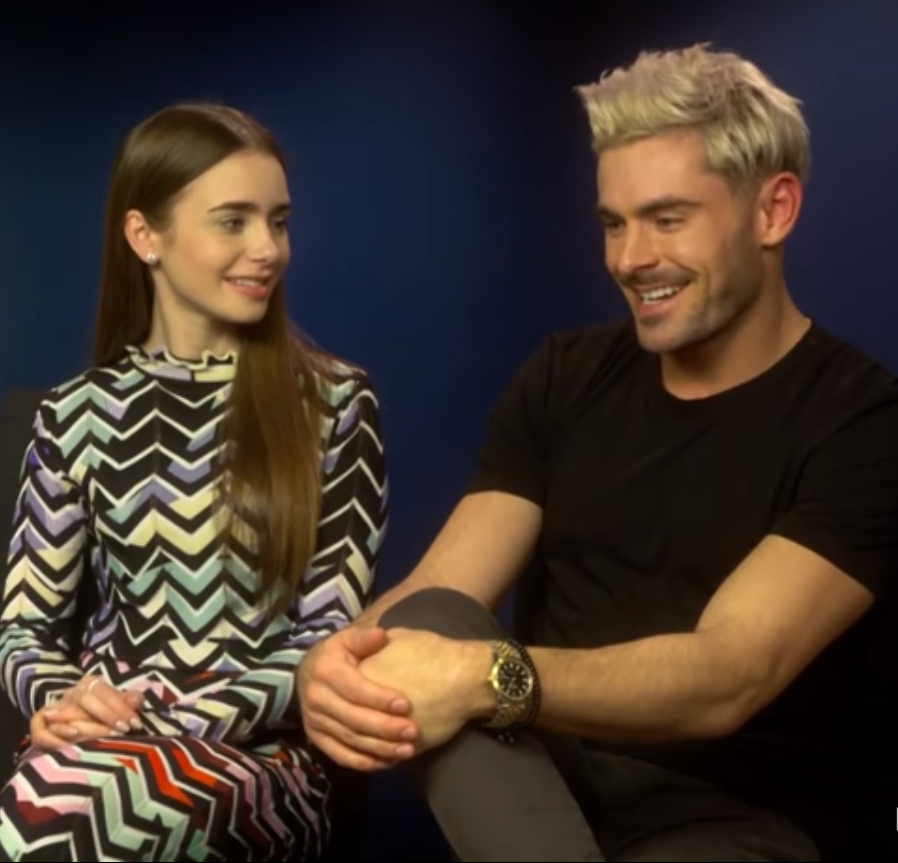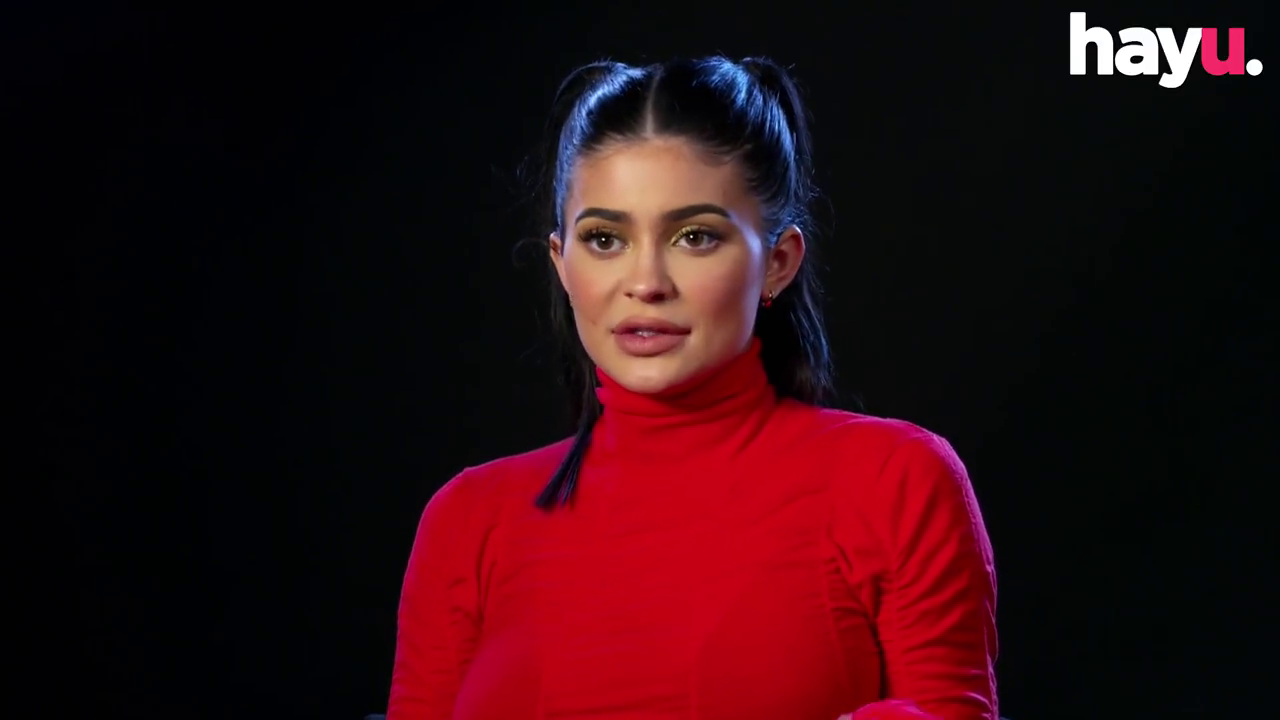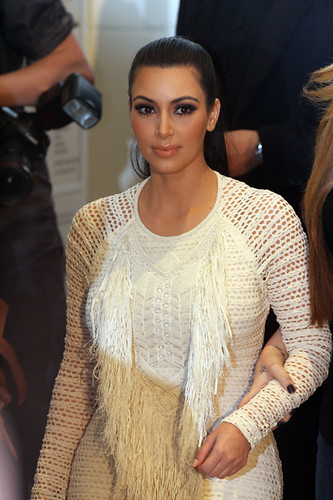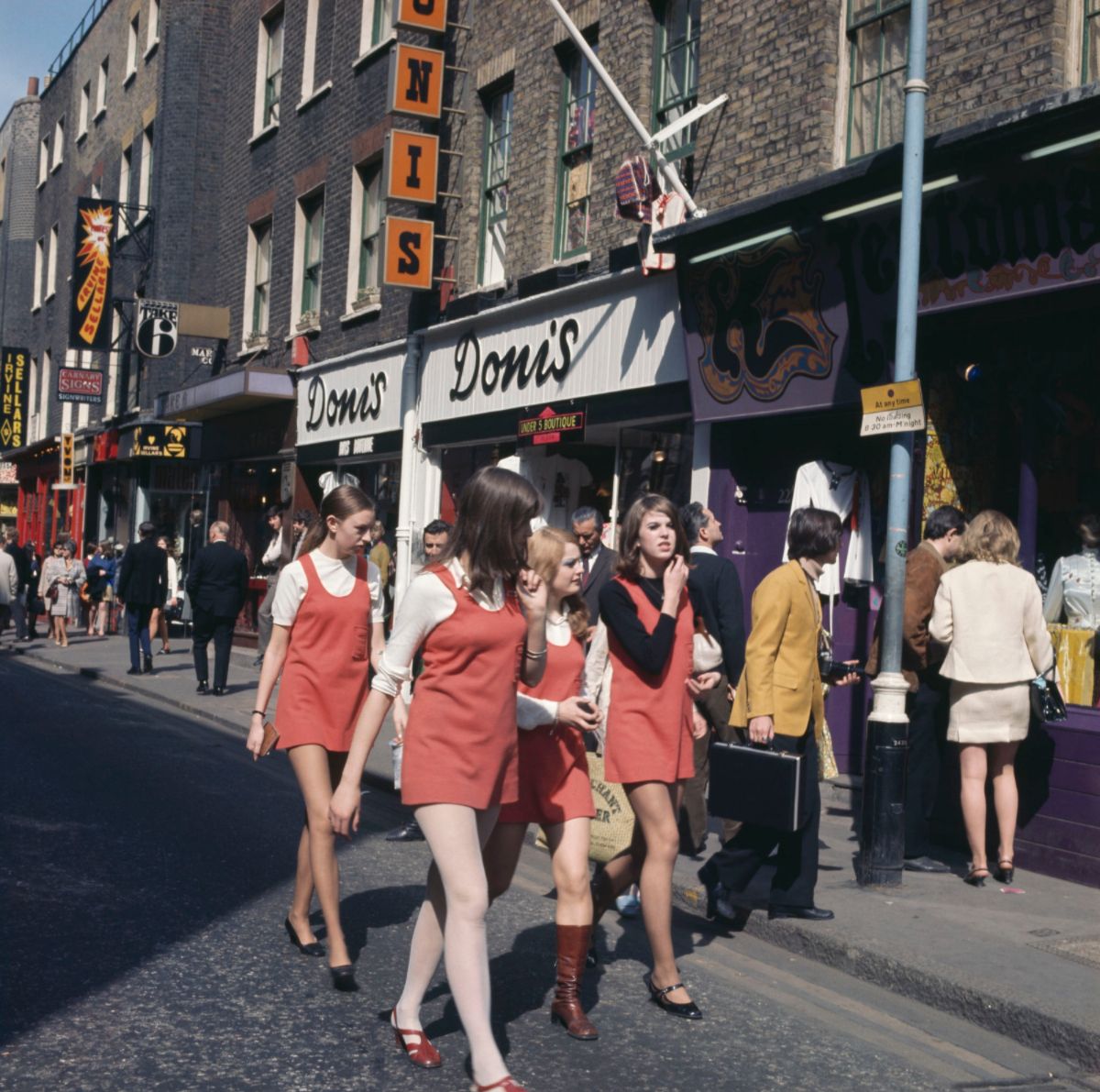
Fashion is a powerful tool for self-expression, allowing individuals to communicate their creativity, identity, and beliefs in myriad ways. For those in the public eye, particularly celebrities, fashion serves as both a deeply personal statement and an unavoidable public spectacle. Red carpets, music videos, award shows, and even casual social media posts have become stages for outfits that not only push boundaries but also ignite widespread conversations, often leading to intense controversy and calls for accountability.
At the heart of many such controversies lies the complex concept of cultural appropriation. Merriam Webster says that to “appropriate” something means “to take or make use of without authority or right.” Building on this, cultural appropriation occurs when a dominant race adopts the culture of a minority, encompassing everything from fashion and religion to music and language. It transforms from mere inspiration into a significant issue when the dominant group borrows these elements without sensitivity to what these cultural symbols truly represent, stripping them of their deep meaning and reducing them to mere aesthetics.
In Hollywood, this dynamic has sparked an ongoing, often heated debate where artists constantly walk a precarious line. On one side, there’s the desire for respectful gestures that celebrate other cultures; on the other, the risk of actions being perceived as outright theft or deeply offensive. This article dives into twelve such instances where celebrities found themselves embroiled in major religious or cultural outrage due to their artistic or fashion choices, examining the specific contexts, the backlash they faced, and the broader implications for cultural understanding and respect in the public sphere.

1. **Beyoncé’s Indian Attire in ‘Hymn for the Weekend’**
When Coldplay and Beyoncé released their music video for “Hymn for the Weekend,” filmed in Mumbai during the annual Holi festival, it was met with a spectrum of reactions. The video showcased the band performing and playing in the streets with children as colors were splashed on them, a vivid celebration of the festival. However, Beyoncé’s appearance within the video, dressed as a Bollywood actress in Indian clothes and mehndi, quickly drew scrutiny.
Teen Vogue, for instance, sharply criticized the band and Beyoncé, accusing them of using India as little more than a “vessel to ‘find themselves.’” The publication described the video as “a white person’s fever dream for what India looks like,” highlighting concerns about the superficial engagement with a rich and complex culture. This perspective underscored the criticism that the video, despite its vibrant visuals, might have inadvertently reduced Indian culture to a picturesque backdrop for Western artists.
MTV, in contrast, offered a kinder assessment, suggesting that the musicians and the song itself were secondary to the ceremony they were representing. This points to the nuanced nature of cultural engagement, where intentions can be interpreted very differently. However, the controversy surrounding Beyoncé’s portrayal served as an important reminder of the responsibility artists bear when engaging with cultures outside their own, emphasizing the need for thoughtful representation rather than potentially perpetuating stereotypes or oversimplifying a rich heritage.
Ultimately, Beyoncé’s involvement in the project, though defended by some as homage, brought attention to the complexities of global cultural exchange. It underscored the importance of ensuring that creative works, especially those reaching a global audience, approach diverse traditions with respect and a genuine understanding of their significance, rather than merely treating them as aesthetic elements.

2. **Iggy Azalea’s Repeated Cultural Appropriation Accusations**
Iggy Azalea has faced multiple accusations of cultural appropriation throughout her career, particularly concerning her music and fashion choices. One notable instance occurred in her music video “Bounce,” where Azalea was depicted leading a dance party while wearing traditional Indian garb. This visual immediately sparked criticism, with many viewers and commentators questioning the appropriateness of a non-Indian artist adopting traditional attire as a costume for entertainment.
The controversy extended beyond specific outfits to broader critiques of her engagement with black culture in her music. Rapper Azaliea Banks famously tweeted at “Igloo Australia,” a derisive moniker, stating, “Black Culture is cool, but black issues sure aren’t, huh?” This pointed accusation highlighted a common frustration: the perception that elements of black culture—like music styles, fashion, and slang—are readily adopted and popularized by non-black artists, while the struggles and systemic issues faced by black communities are ignored or sidelined.
Banks’ comment underscored the sentiment that appropriation isn’t just about wearing an outfit; it’s about benefiting from a culture without acknowledging or supporting the community from which it originates. These incidents raised significant questions about authenticity, respect, and the ethical responsibilities of artists who draw inspiration from cultures that are not their own. They forced a public dialogue about the line between appreciation and appropriation, and the perceived selective engagement with minority cultures for commercial gain.

3. **Miley Cyrus’s Shift Away from Hip-Hop**
Miley Cyrus also found herself at the center of a cultural appropriation debate after making public statements about her changing musical direction. After previously embracing hip-hop music and collaborating extensively with black artists, Cyrus stated in an interview with Billboard that she had moved away from the genre. This declaration, coming after a period where her public persona heavily incorporated elements of black hip-hop culture, generated significant backlash.
Critics argued that Cyrus exhibited “white privilege,” suggesting she had only adopted black culture when it was “convenient” or trendy for her career, only to discard it when it no longer served her artistic or commercial interests. This perspective highlighted the frustration that black cultural forms are often commodified and then abandoned by those in dominant positions, without genuine engagement or long-term commitment to the communities that created them. The criticism wasn’t just about a change in musical genre, but about the perceived transactional nature of her engagement.
The debate gained further prominence in 2015 when Nicki Minaj directly called out Cyrus at the VMAs, stating, “You’re in videos with black men, and you’re bringing out black women on your stages, but you don’t want to know how black women feel about something that’s so important?” Minaj’s powerful question articulated the sentiment that Cyrus, while benefiting from the aesthetic and cultural capital of black artists, seemed unwilling to engage with the substantive issues affecting black women. This incident became a highly visible example of the complex dynamics of race, privilege, and cultural borrowing in pop music, forcing discussions about responsibility and solidarity.
Read more about: Pattie Mallette’s Enduring Prayer: Tracing Justin Bieber’s Unforgettable Journey Through Stardom’s Highs and Lows

4. **Zac Efron’s ‘Just for Fun’ Dreadlocks**
In July, actor Zac Efron faced accusations of cultural appropriation after sporting dreadlocks in an Instagram photo, which he captioned “just for fun.” What Efron likely intended as a lighthearted fashion experiment quickly became a flashpoint for a heated debate in his comment section, with reactions polarizing on both sides. The backlash was immediate and pointed, highlighting the deep cultural significance of hairstyles like dreadlocks.
One commenter powerfully articulated the core of the offense, stating, “Nothing about my culture is ‘just for fun’.” This response encapsulated the frustration felt by many in the black community, where dreadlocks hold profound historical, spiritual, and cultural meaning. For centuries, dreadlocks have been a symbol of identity, resistance, spirituality, and heritage for various African cultures and their descendants, often carrying a legacy of discrimination and struggle in predominantly white societies.
When a hairstyle with such deep roots and ongoing significance is adopted by someone outside the culture—particularly by a celebrity from a dominant cultural group—and presented as a casual, ephemeral trend, it can be seen as disrespectful and dismissive. The phrase “just for fun” inadvertently trivialized a powerful cultural emblem, leading to accusations that Efron was taking an aesthetic without acknowledging or respecting its origins and importance. The incident underscored that what may seem like a simple fashion choice to some can carry immense weight and historical context for others.

5. **Katy Perry’s Geisha and Cornrows Controversies**
Katy Perry has publicly acknowledged and apologized for several instances where her performances and music videos were accused of cultural appropriation, admitting that she “did it wrong.” One such performance occurred at the American Music Awards in 2013, where Perry dressed as a geisha, complete with a full kimono, tabi socks, lacquered hair, geiko pancake, and heavily powdered face. This portrayal was widely criticized for reducing a significant and artistic element of Japanese culture to a costume for entertainment, thereby flattening its historical and social context.
Another significant incident involved her 2017 video for “This is How We Do,” where the singer sported cornrows in her hair. Cornrows, like dreadlocks, are a hairstyle deeply rooted in African and African American culture, carrying historical significance related to identity, resistance, and community. Their adoption by Perry, a white artist, was viewed by many as an appropriation of a style without understanding or acknowledging its cultural weight, particularly given the ongoing discrimination faced by black individuals for wearing such hairstyles in professional or academic settings.
In a podcast interview, Perry reflected on these missteps, stating, “I won’t ever understand some of those things because of who I am — I will never understand, but I can educate myself, and that’s what I’m trying to do along the way.” Her apology and commitment to education highlight a growing awareness among celebrities of their impact and the need for greater cultural sensitivity. These incidents served as prominent examples of how fashion choices, even with seemingly innocent intentions, can cause offense when they appropriate culturally significant elements without proper respect or understanding.

6. **Marc Jacobs’ Dreadlocks on White Runway Models**
In 2016, designer Marc Jacobs staged a runway show at New York Fashion Week that quickly ignited a firestorm of criticism. The show featured a group of all-white models walking down the runway sporting dreadlocks. A hair stylist for Jacobs defended the choice, stating that the look was inspired by rave and club culture, acid house, and particularly by Lana Wachowski. However, this explanation did little to quell the immediate backlash that erupted on social media.
Critics swiftly called out Jacobs for cultural appropriation, pointing out the historical and cultural significance of dreadlocks within black communities and the irony of showcasing them exclusively on white models. The outrage stemmed from the perceived commodification of a black cultural hairstyle, especially given that black individuals are often penalized or discriminated against for wearing dreadlocks, while white individuals can adopt them as a trend without facing similar consequences.
Jacobs’ initial response further fueled the controversy. In a now-deleted tweet, he defensively wrote, “Funny how you don’t criticize women of color for straightening their hair.” He also added, “I respect and am inspired by people and how they look. I don’t see color or race- I see people. I’m sorry to read that so many people are so narrow minded…Love is the answer. Appreciation of all and inspiration from anywhere is a beautiful thing. Think about it.” These comments were criticized for deflecting blame and demonstrating a lack of understanding of systemic racial dynamics and the power imbalances inherent in cultural appropriation.
While Jacobs later issued a more conciliatory statement, the incident became a prominent example of how designers and fashion houses, despite claiming inspiration, can inadvertently (or purposefully) disrespect cultural origins. It underscored the critical distinction between cultural appreciation, which involves understanding and honoring a culture, and appropriation, which often involves taking elements from a marginalized culture without context or respect, particularly when those from the originating culture face prejudice for practicing their own traditions.

7. **J.K. Rowling’s Pottermore ‘Skin Walkers’**
Author J.K. Rowling, a beloved figure in the literary world, found herself embroiled in a significant cultural controversy following the release of a series on her Pottermore website. This particular installment aimed to explore the history of the wizarding world in North America, but it did so by drawing heavily from Native American culture, specifically referencing “skin walkers” and medicine men. While Rowling likely intended to enrich her fictional universe, her approach quickly ignited widespread criticism, demonstrating how even magical narratives must contend with real-world cultural sensitivities.
The immediate backlash was fierce, with many critics, including Adrienne Keene, founder of the prominent website Native Appropriations, taking to social media to voice their concerns. Keene powerfully articulated the core of the offense, stating, “You can’t just claim and take a living tradition of a marginalized people. That’s straight up colonialism/appropriation.” This sentiment underscored the perception that Rowling, by incorporating sacred and culturally specific elements into a fantasy setting, was engaging in a form of cultural theft, stripping these traditions of their deep meaning and historical context for entertainment.
In response to the growing outrage, Rowling clarified that her story was intended to stand apart from the real-life history of Native Americans. However, this clarification did little to fully appease critics, as the incident sparked a broader conversation about the responsibility of creators when borrowing from diverse cultures. It highlighted the critical distinction between genuine appreciation that involves deep understanding and respect, and appropriation that risks trivializing or misrepresenting traditions, especially those from marginalized communities whose narratives have historically been exploited.
This moment served as a potent reminder that popular culture, no matter how fantastical, operates within a complex web of cultural dynamics. It compelled audiences and creators alike to reflect on the ethical implications of storytelling, particularly when it intersects with the sacred traditions and identities of Indigenous peoples, prompting a necessary dialogue about accountability and education in the realm of creative expression.

8. **Karlie Kloss’s Native American Headdress**
In 2012, Victoria’s Secret model Karlie Kloss ignited a firestorm of controversy during a runway show when she appeared in a leopard print bikini, complemented by a floor-length Native American headdress. The visual, compounded by the word “Thanksgiving” flashing behind her on the catwalk, was immediately condemned by numerous groups and individuals, highlighting the persistent issue of cultural appropriation in the fashion industry.
Native American headdresses are not merely decorative accessories; they are sacred symbols, typically reserved for esteemed male leaders and warriors within various Indigenous cultures, earned through acts of bravery and respect. Their use as a frivolous fashion statement, divorced from their profound cultural and spiritual significance, was seen as deeply disrespectful and offensive. The context of “Thanksgiving” further exacerbated the outrage, as the holiday itself carries a complex and often painful history for many Native American communities, frequently overshadowing the displacement and violence they endured.
Following the intense backlash, both Karlie Kloss and Victoria’s Secret acted swiftly. They issued public apologies and, notably, removed the segment from their broadcast. Kloss expressed remorse, acknowledging the insensitivity of the outfit. This prompt response, while not erasing the initial offense, demonstrated a willingness to listen and learn, setting an example for how brands and celebrities could begin to address such missteps.
The incident remains a stark reminder of the importance of cultural sensitivity, particularly when engaging with Indigenous cultures that have historically faced marginalization and misrepresentation. It underscored the critical need for designers and public figures to educate themselves on the origins and meanings of cultural symbols, fostering genuine appreciation rather than perpetuating harmful stereotypes and thoughtless appropriation in the name of fashion or entertainment.

9. **Selena Gomez’s Hindu Bindi**
During her performance at the 2017 MTV Movie Video Awards, pop star Selena Gomez opted to wear a Hindu bindi on her forehead as a fashion statement. While many might have viewed it as a harmless aesthetic choice, this particular accessory ignited a significant religious controversy, drawing criticism from Hindu leaders and sparking a global conversation about the respectful use of sacred symbols.
The bindi, far from being a mere ornament, holds profound religious and spiritual significance in Hinduism. As Hindu statesman Rajan Zed eloquently explained to WENN via Huffington Post, “The bindi on the forehead is an ancient tradition in Hinduism and has religious significance. It is also sometimes referred to as the third eye and the flame, and it is an auspicious religious and spiritual symbol.” For countless adherents, it is a deeply personal and sacred mark, representing divinity, spiritual insight, and protection.
Zed’s critique extended beyond the simple act of wearing the bindi, emphasizing the context and intent: “It is not meant to be thrown around loosely for seductive effects or as a fashion accessory aiming at mercantile greed. Selena should apologize and then she should get acquainted with the basics of world religions.” This statement cut to the heart of the issue, highlighting the discomfort many felt at seeing a revered symbol detached from its spiritual meaning and seemingly commodified for entertainment value, especially by someone outside the culture.
While actress Priyanka Chopra defended Gomez, suggesting it was an artistic choice, the incident powerfully illustrated the fine line between appreciation and appropriation. It served as a vital educational moment, prompting wider discussions on how public figures must approach culturally significant items with reverence and informed understanding, ensuring that their choices do not inadvertently disrespect or trivialize the deeply held beliefs of others.

10. **Pharrell Williams’ Native American Headdress**
Singer Pharrell Williams, known for his trendsetting style and infectious music, became the subject of cultural appropriation accusations after appearing on the cover of Elle UK magazine wearing a Native American headdress. This incident, much like those involving Karlie Kloss and other public figures, drew immediate and widespread condemnation, particularly from Indigenous communities and their allies.
For many Native American tribes, the headdress is a profoundly sacred item, earned through immense courage, spiritual journeys, and leadership. It is not a costume or a fashion accessory to be donned lightly, especially by individuals outside the culture who have not earned the right to wear it. The image of Pharrell, a prominent figure in pop culture, sporting such a significant symbol was perceived as a blatant disregard for its cultural weight and an act of appropriation that contributed to the trivialization of Indigenous heritage.
The public backlash was swift and organized, with many taking to social media to express their outrage using the hashtag #NotHappy, a poignant reference to Williams’s hit single. Critics pointed out the hypocrisy of a celebrity advocating for happiness and positivity while simultaneously disrespecting a culture that has faced historical oppression and ongoing struggles. The irony of the situation intensified the calls for accountability and greater cultural understanding within the entertainment industry.
In response to the significant uproar, Pharrell issued an apology, stating, “I respect and honor every kind of race, background and culture. I am genuinely sorry.” His statement, though welcomed by some, underscored the ongoing challenge for public figures to navigate cultural inspiration responsibly. This incident further cemented the understanding that genuine respect involves more than admiration; it demands education, context, and a deep appreciation for the origins and significance of cultural symbols, ensuring they are not reduced to mere aesthetic trends.

11. **Kylie Jenner’s Cornrows**
Kylie Jenner, a prominent figure in pop culture and social media, found herself at the center of a cultural appropriation debate after posting an Instagram photo of herself with cornrows, accompanied by the casual caption, “I woke up like disss.” What might have seemed like a simple fashion post quickly escalated into a heated discussion about the commodification of Black culture and the double standards often applied to hairstyles.
The controversy was amplified and powerfully articulated by “Hunger Games” actress Amandla Stenberg in a YouTube video titled “Don’t Cash Crop on My Cornrows.” Stenberg directly called out individuals like Jenner (and Katy Perry), accusing them of wearing cornrows and “appropriating black culture” while “failing to help black Americans.” This critique resonated deeply with many, highlighting the frustration that elements of Black culture, such as hairstyles, are often adopted and celebrated by dominant groups while the systemic issues and struggles faced by Black communities are ignored.
Cornrows, like dreadlocks, are a hairstyle deeply rooted in African and African American culture, carrying historical significance related to identity, resistance, and community. Black individuals, particularly Black women, frequently face discrimination and professional penalties for wearing these natural, culturally significant styles in academic or professional settings. When white celebrities adopt them as a fleeting trend, it exposes a glaring double standard and reinforces the perception of cultural exploitation for aesthetic or commercial gain, without enduring the societal repercussions.
This incident became a significant point of discussion, underscoring the imperative for public figures to not only acknowledge the origins of the cultural elements they embrace but also to engage with the communities from which they draw inspiration in a meaningful and supportive way. It further fueled the ongoing conversation about authenticity, respect, and the ethical responsibilities of those who wield immense cultural influence on platforms like social media.

12. **Kim Kardashian’s Controversial Costumes**
Kim Kardashian, a global icon renowned for her influence on fashion and pop culture, has repeatedly faced accusations of cultural appropriation throughout her career. In 2017, she drew mixed responses for her choice of Halloween costumes, specifically portraying late pop stars Aaliyah and Selena. While some defended these as tributes, others criticized them as insensitive, particularly given the historical context surrounding the artists.
A more severe and widely condemned incident occurred when people on social media claimed that one of her makeup campaigns depicted her in “blackface.” This accusation stemmed from images that appeared to significantly darken her skin tone, invoking the deeply painful and racist history of blackface minstrelsy. Blackface, historically used to mock and dehumanize Black people, carries a profound legacy of racial prejudice and is unequivocally considered offensive.
These incidents are part of a broader pattern of cultural appropriation accusations levied against the Kardashian-Jenner family, sparking ongoing debates about their perceived tendency to borrow from and commodify elements of Black culture without adequate respect or understanding. Critics frequently point to the family’s vast platform and privilege, arguing that their choices often perpetuate harmful stereotypes while failing to genuinely support or acknowledge the communities from which they draw inspiration.
Kim Kardashian’s controversies serve as stark reminders of the immense responsibility that comes with global fame and influence. Her fashion and aesthetic choices consistently prompt vital discussions about race, identity, and the boundaries of cultural borrowing in the public eye. These moments highlight the constant need for public figures to engage in deep reflection and education, understanding the profound impact their actions have on societal perceptions and the critical importance of fostering genuine cultural respect.
***
From the very beginning of this journey, exploring the nuances of celebrities’ fashion choices, it becomes abundantly clear that style is far more than mere fabric and design; it is a profound mirror reflecting societal values, tensions, and the ever-evolving ideals of our time. Each instance of outrage, from Beyoncé’s vibrant Indian attire to Kim Kardashian’s controversial Halloween looks, has undeniably sparked dialogue, challenging not only the individuals involved but also the broader industries of fashion and entertainment to confront their responsibilities.
These pivotal moments, whether involving sacred symbols like the Hindu bindi or culturally significant hairstyles like dreadlocks and cornrows, consistently highlight the ongoing struggle between artistic freedom and the imperative for cultural sensitivity. As we’ve seen, what one person perceives as a tribute or ‘just for fun’ can deeply wound and offend communities whose traditions have often been marginalized, misrepresented, or even criminalized. The rapid amplification through social media further underscores the immediate need for celebrities and designers to approach diverse cultures with humility, empathy, and a genuine commitment to understanding.
The conversations sparked by these outfits are not simply about who wore what; they are about power dynamics, historical injustices, and the continuous fight for authentic representation and respect. They serve as a powerful catalyst for change, pushing for greater accountability and education within creative spaces. Ultimately, these unforgettable moments, despite the controversies they ignited, compel us all to engage in a more thoughtful, inclusive dialogue about what we wear, what it means, and the lasting impact it leaves on the intricate tapestry of our global society. Fashion, in its boldest and most debated forms, remains a dynamic canvas for storytelling, identity, and the urgent call for cultural understanding.”
, “_words_section2”: “1945




